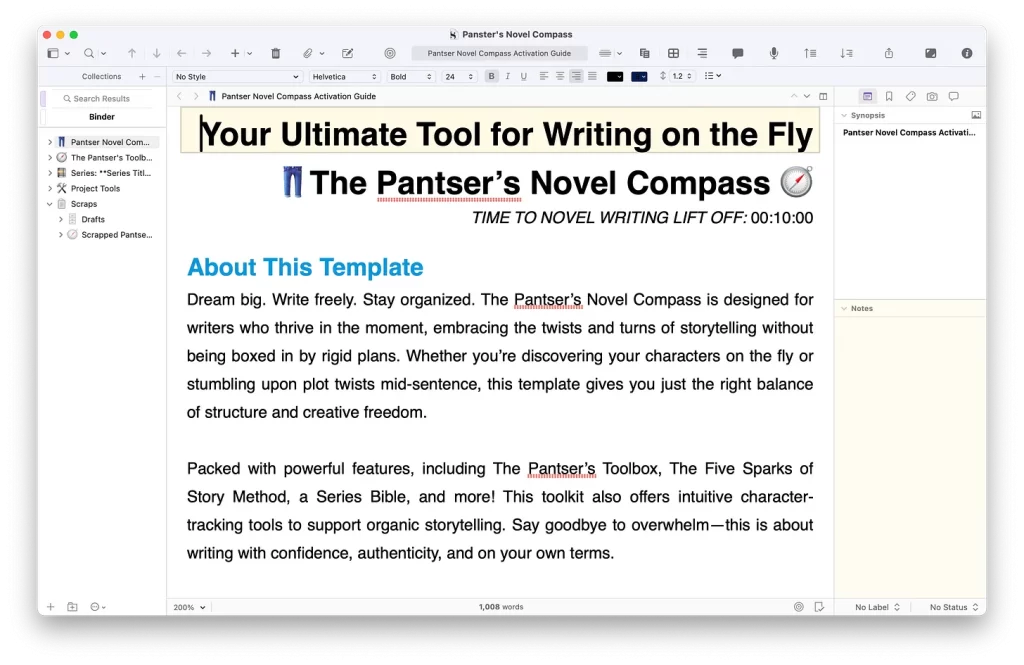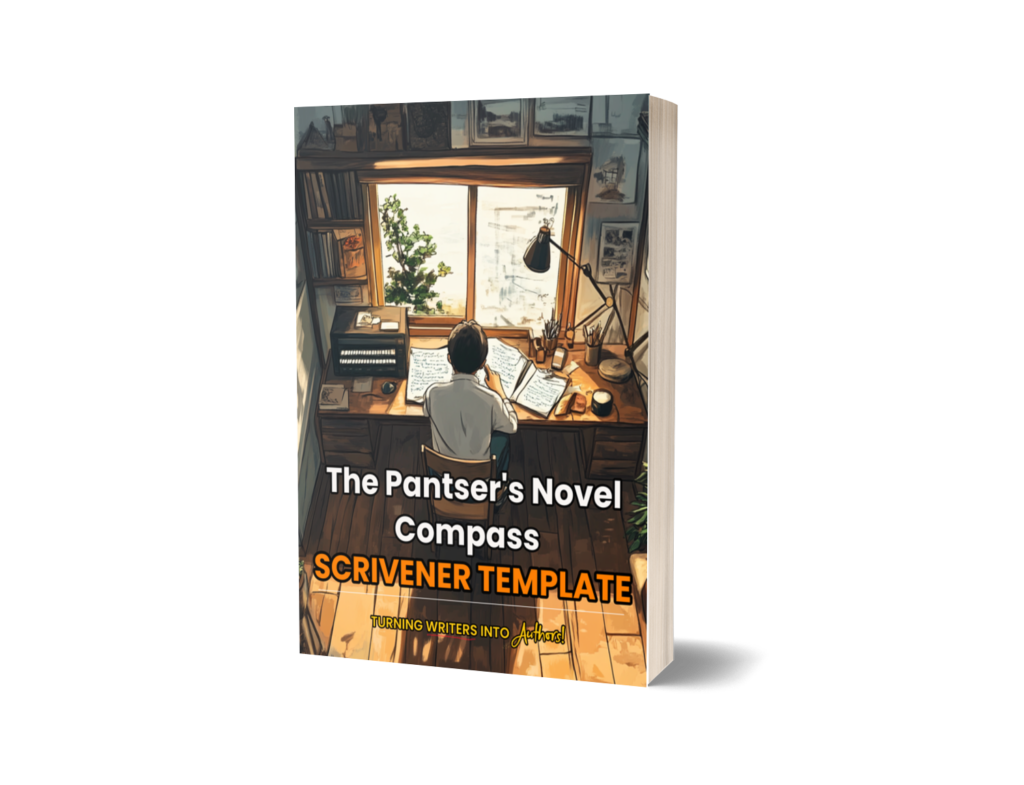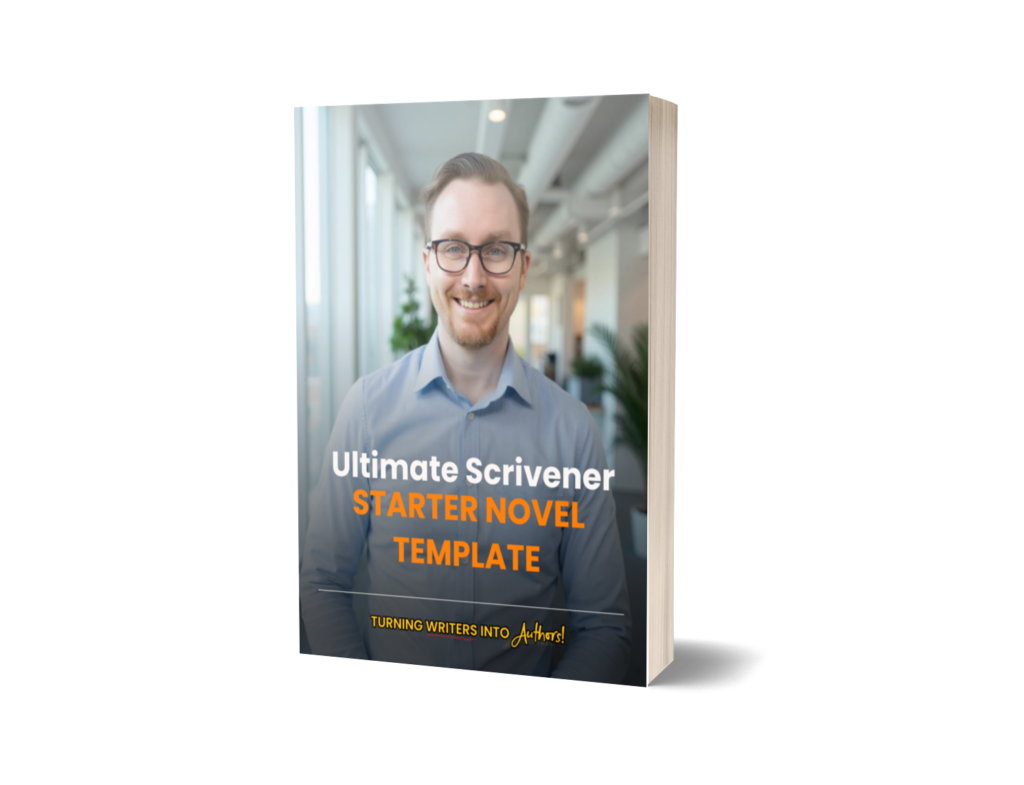Writing a novel without a rigid plan can feel as thrilling as exploring uncharted territory. For pantsers, every unexpected twist is a burst of creative freedom. But when your story starts to meander or your ideas outpace your organization, it can feel overwhelming. Don’t worry–there’s no need to trade your creative spontaneity for strict outlines.

Instead, focus on finding tools and strategies that keep your story on track, your way. Enter Scrivener. While it’s often seen as a plotter’s best friend, Scrivener’s true strength lies in its adaptability. Pair it with a creative framework like the Five Sparks of Story, and you’ll have the perfect balance between structure and free-spirited storytelling. Here’s how you can harness the beauty of chaos and turn it into a finished novel.
1. Scrivener Isn’t Just for Plotters

If you’ve heard that Scrivener is only for planners, it’s time to bust that myth. This writing powerhouse gives you the tools to stay organized while letting your creativity flourish. You get to decide how much or how little structure you need.
Here’s how to get started:
- Draft Freely in the Editor: It’s distraction-free, so your ideas can flow uninterrupted.
- Corkboard View: Use this feature to jot down loose ideas or scenes and shuffle them around as your story grows.
- Custom Folders: Create folders for your random thoughts, like Story Seeds or Potential Scenes, so those short bursts of brilliance don’t get lost.
- Labels and Keywords: Use these tools to track characters or themes across your novel.
- Set Goals: Scrivener’s Project Targets lets you set and track word count goals, keeping you motivated.
Scrivener gives you the freedom to write as you want while offering structure when you need it most.
2. The Five Sparks of Story

Even as a pantser, having a loose creative framework can help steer your story in the right direction. The Five Sparks of Story offer just enough structure while leaving room for improvisation.
Step One: Provocative
Hook your reader (and yourself!). Introduce a question, conflict, or scenario that demands attention. Maybe your protagonist wakes up in a world where everyone remembers them–but they have no memory of their own past. Intrigue creates momentum.
Step Two: Layered
Add depth to your initial idea. Why did this happen, and what’s hiding beneath the surface? Start playing with possibilities–you don’t need to figure it all out yet.
Step Three: Personal
What’s at stake emotionally? Your protagonist’s goals, fears, and values should guide their decisions. For example, if memory loss hints at betrayal, how will your protagonist cope with losing trust in their closest ally?
Step Four: Ethical Dilemma
Raise the tension with moral challenges. Make your characters wrestle with choices that test their principles. For instance, should your protagonist join forces with someone untrustworthy, or face insurmountable odds alone?
Step Five: Emotionally Charged
Keep the emotional stakes front and center. Build moments of vulnerability, triumph, or heartbreak that pull readers deeper into your story.
By weaving these “sparks” into your narrative, you’ll create a story that’s cohesive yet dynamic.
3. Build Your Pantser-Friendly Scrivener Setup
Scrivener’s flexibility makes it an ideal tool for turning brainstorms into a cohesive draft. Here’s a simple workflow you can customize as you go:
- Step 1: Start a new project with my free Scrivener Starter Novel Template. It’s clean and straightforward, perfect for pantsers.
- Step 2: Create folders for specific purposes, such as:
- Potential Scenes for rough ideas.
- Plot Beats for loosely mapped story moments.
- Scenes I Want to Write for bursts of inspiration you don’t want to lose.
- Step 3: Draft freely, moving back and forth between the Editor and Corkboard to shuffle ideas as your story develops.
Want to take it further? Use color-coded Labels for characters or themes and Keywords for tracking plot threads. Don’t forget to set achievable writing goals with *Project Targets–*small milestones can make a big difference in your momentum.
4. Checkpoints to Keep Your Story on Track
For pantsers, mini check-ins can be a game-changer. At the start of your writing session, take five minutes to reflect with these questions:
- What just happened? A quick glance at your last scene can refresh your memory.
- What might happen next? Brainstorm loose ideas and add them to a “Potential Scenes” folder.
- What excites you about today’s writing? Stick with moments that spark joy and curiosity.
- Any new ideas but unsure where they fit? Save these in a separate folder, like “Story Seeds.”
- What part of the story still needs attention? Use a “Plot Points” folder to track unfinished threads.
This light-touch system keeps you focused without feeling boxed in.
5. Celebrate the Chaos
Being a pantser means finding magic in the unpredictable. Instead of aiming for perfection, celebrate the creativity that comes from letting your story evolve naturally. Did a character surprise you? Great. Did you stumble upon a twist you didn’t plan? That’s your storytelling gift at work.
Remember, tools like Scrivener and frameworks like the Five Sparks aren’t here to restrict you. They’re here to help you build, refine, and share the story only you can tell.
6. Supercharge Your Writing With the Pantser’s Novel Compass

Still feeling overwhelmed? The Pantser’s Novel Compass Scrivener Template is built specifically to help discovery writers stay on track without stifling creativity. It’s your one-stop tool to organize your chaos beautifully.
What’s Inside the Compass Template?
- Pre-made folders for Potential Scenes, Story Seeds, and Plot Beats.
- The Five Sparks Framework, embedded to guide your story organically.
- Tools for tracking character arcs and plotlines using Scrivener’s Labels and Keywords.
- Built-in daily and manuscript writing goals you can easily adjust.
- A Series Bible for world-building and continuity.
This template blends flexibility with structure, designed to empower pantsers at every step of the writing process.
Start Writing Your Way
The joy of being a pantser lies in the unexpected–the twists, turns, and discoveries that make storytelling so exciting. With Scrivener and a few adaptable strategies, you can harness that energy while crafting a cohesive, compelling novel.
Whether you’re just starting or deep into your draft, trust your chaotic brilliance. The tools are there–now it’s time to create something extraordinary.
